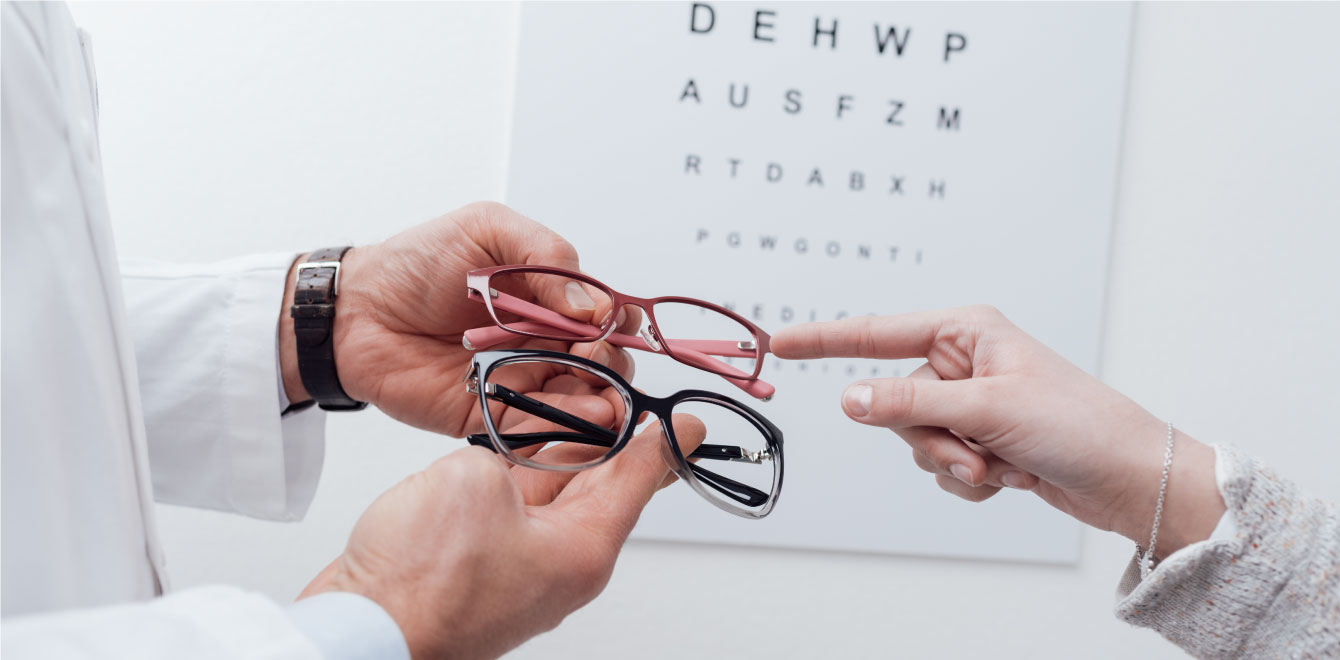
Comprehensive Eye Care
We provide comprehensive eye exams for all ages. A comprehensive eye exam includes assessing both the visual system’s function and the health of your eyes. During your exam, your doctor will listen to your concerns and symptoms and perform a careful evaluation of how well you are seeing and how your eyes work together. Your doctor will then check your prescription for glasses. Many of our patients have visual needs specific to their occupation or avocation, and we take the time to customize a prescription that will enhance your lifestyle. Your doctor will also perform a thorough evaluation of your ocular health, carefully looking for any signs of eye disease or disorders. As primary eye care providers, our doctors are trained in early detection of eye disease and work closely with multiple sub-specialist eye surgeons to deliver thorough, cutting-edge eye care.
We believe it is important to have yearly eye examinations, even if your vision doesn’t seem like it has changed. With regular eye care, we are often able to detect eye diseases in early stages, before you experience any symptoms. Some of the things that can be detected with a routine eye exam are:
Diabetes:
Diabetic eye disease is the number one cause of vision loss in working-age adults in the United States. In Diabetic Retinopathy, there is no pain and often no symptoms in early stages. As the disease progresses, the blood vessels in the retina (the light-sensitive tissue in the back of the eye) get damaged and leak fluid. This can cause swelling, which leads to blurred vision. New blood vessels can also grow on the surface of the retina and can bleed into the eye, further impairing vision. If you have diabetes, be sure to have a comprehensive dilated eye exam at least once a year. Diabetic eye disease can be detected early and treated before noticeable vision loss occurs.
Age-Related Macular Degeneration (AMD):
AMD is a leading cause of blindness in the United States. The macula, which is in the back of the eye, controls our central vision. In AMD, the macula is damaged which causes permanent vision loss. People with early AMD may not notice much change in their vision, especially if the disease affects only one eye. In later stages of AMD, patients can experience blurriness (not correctable with glasses), distortion of images, and permanent loss of central vision. While there is no cure for AMD, there is much research being done on AMD and as a result, many new treatments are emerging to slow progression of this disease.
Glaucoma:
Glaucoma is a disease that affects the optic nerve and can cause permanent vision loss or blindness. The optic nerve is responsible for carrying the visual information from the eye to the brain. As with many other eye diseases, glaucoma usually has no symptoms in its early stages. If glaucoma remains untreated, it will eventually cause permanent vision loss starting with the peripheral vision and progressing to affect the central vision. Glaucoma can’t be cured, but there are treatments to prevent it from progressing. Therefore, early detection is key.
Cataract:
A cataract is a clouding of the lens in the eye. The lens is a clear part of the eye that helps to focus light and as it becomes cloudy, it becomes increasingly difficult to see. People with cataracts may also experience increased sensitivity to glare or altered color vision.
While cataracts can be caused by many things, they are most often related to aging. By age 80, more than half of Americans either have a cataract or have had cataract surgery. At a routine eye exam, cataracts can be easily detected. In early stages, they are typically just monitored at regular intervals. When the cataract affects your vision enough that you are unable to do the activities you enjoy, surgery can be performed to remove it.
